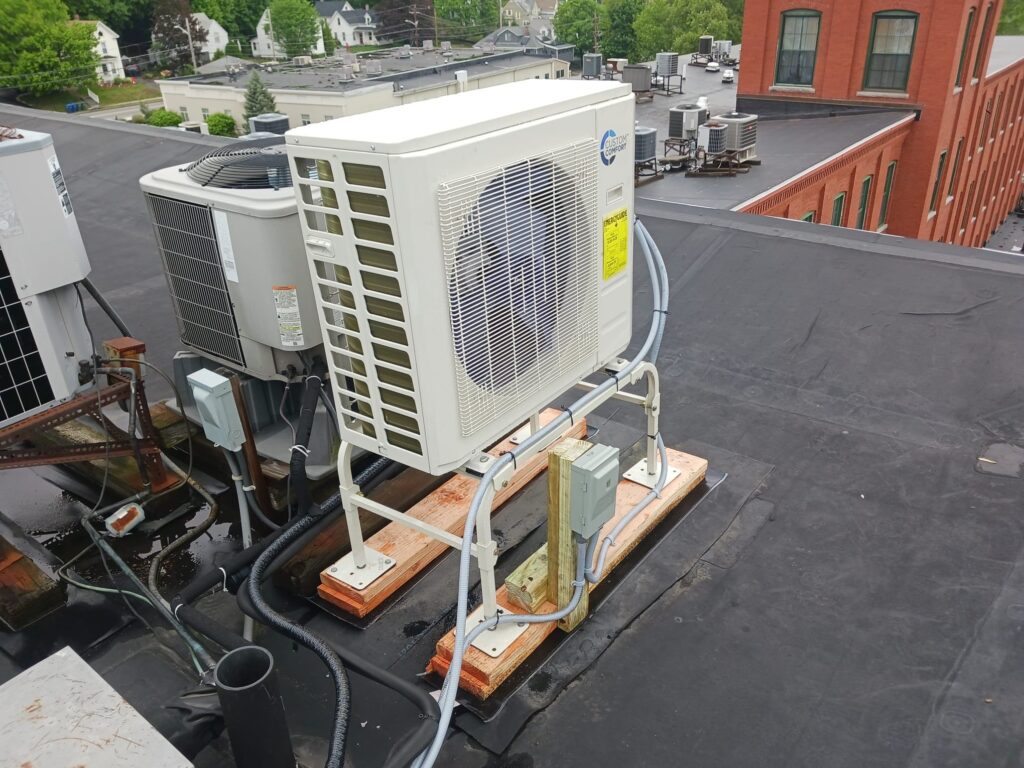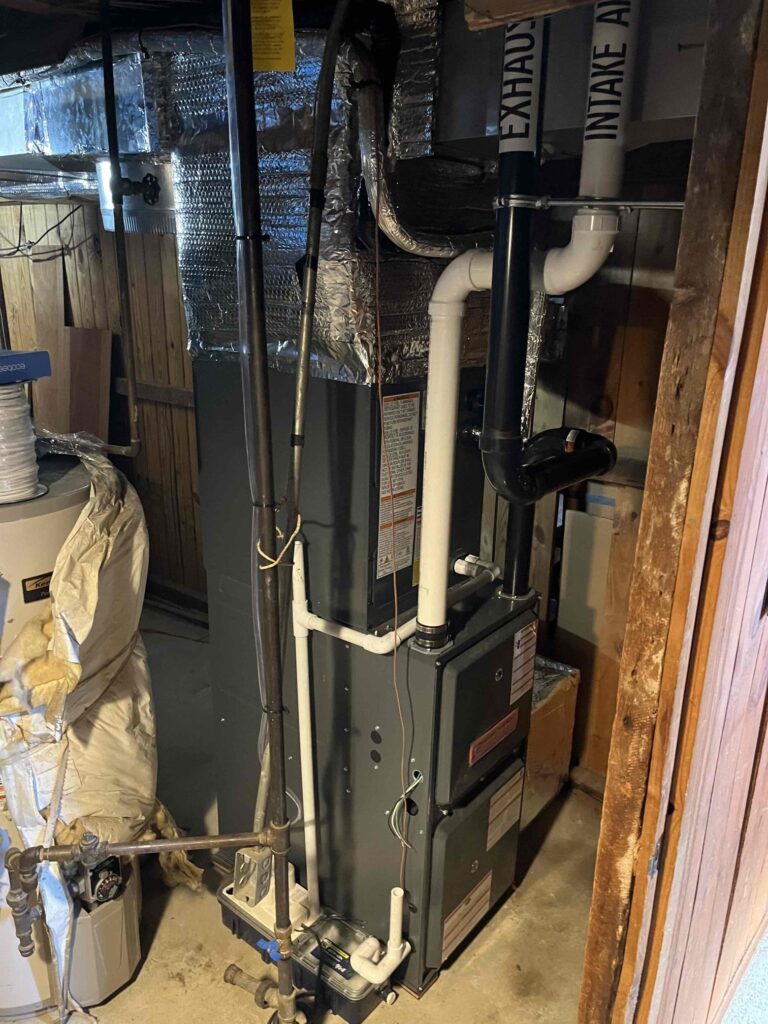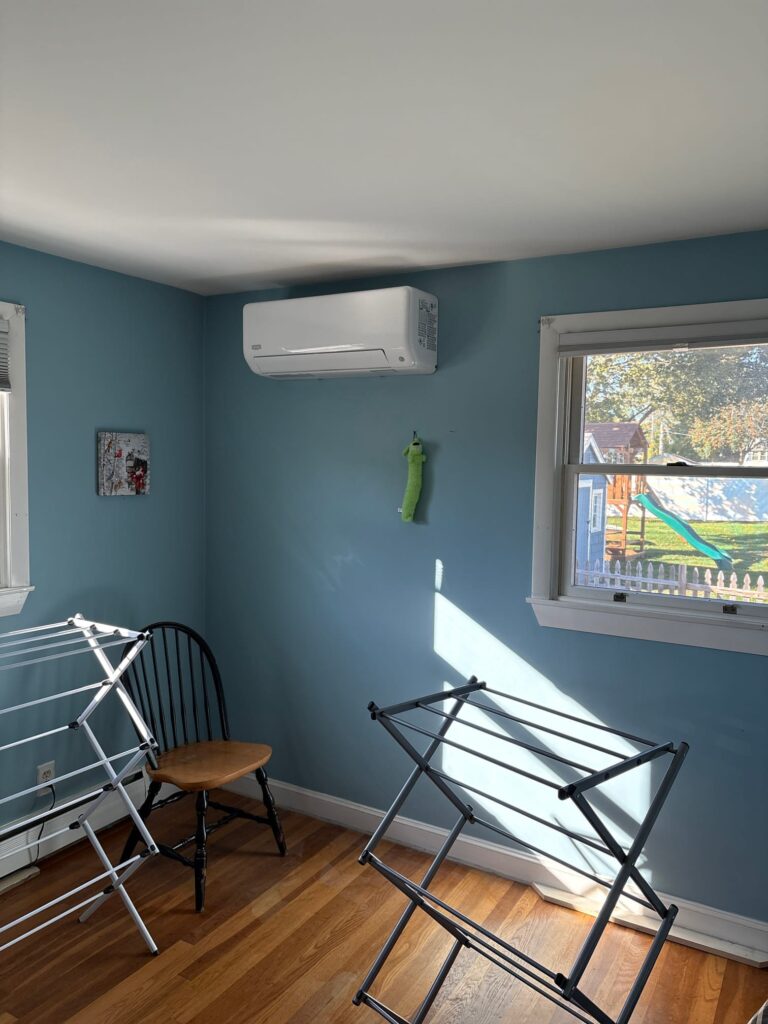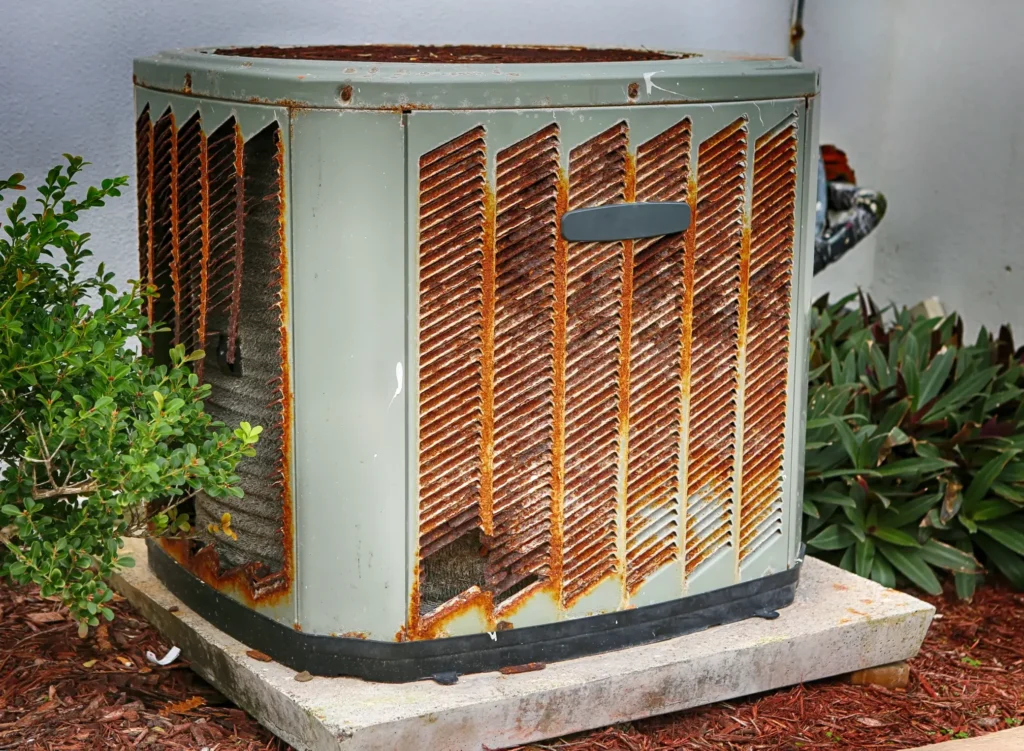Three weeks ago, a Newton homeowner meeting with Nick, one of our heat pump specialists, reached out with a concern. Another heat pump installer told him he “absolutely needed” electric backup heat strips for his new system, adding $2,800 to the quote. But his friend has the same Mitsubishi ducted heat pump with no backup heat and stayed comfortable all winter.
Who’s right?
After installing heat pumps across Worcester County and Norfolk County for over a decade, Endless Energy learned that backup heat isn’t a simple yes-or-no decision. It depends on your specific situation – and unfortunately, some contractors push unnecessary backup systems because they’re profitable add-ons.
Here’s what fourteen years of keeping Massachusetts families warm with heat pumps taught us about backup heat.
Table of Contents
ToggleWhat is Heat Pump Backup Heat?
Most heat pumps in Massachusetts come with some form of backup heating. There are three main types:
Electric resistance strips live inside your indoor unit and kick on when the heat pump can’t keep up. They’re basically big toasters that turn electricity directly into heat. Simple, reliable, expensive to run.
Integrated, Dual-fuel systems keep your existing gas or oil furnace as backup. When outdoor temperatures drop below a set point (usually 25-35°F), the system automatically switches from heat pump to furnace or boiler.
When Massachusetts Weather Challenges Heat Pumps
Last February, we got calls from Sudbury to Reading when temperatures hit single digits for four straight days. Some heat pumps struggled. Others hummed along fine. The difference? Proper sizing and realistic expectations.
Modern cold-climate heat pumps work down to -13°F (Mitsubishi). But “working” doesn’t mean they heat your home the same way they do in October. As temperatures drop, heat pumps:
- Work harder and use more electricity
- Produce less heat per hour
- May struggle to maintain your preferred temperature
- Could ice up more frequently
A properly sized heat pump should handle 98% of Massachusetts heating days without backup. But that extreme 2% – those brutal February stretches – might require help.
The Real Cost of Electric Backup Heat
Here’s where contractors don’t always level with you. Electric backup heat costs roughly three times more to operate than heat pumps!
In Needham last winter, a customer’s backup strips ran for 48 hours during that cold snap. His electric bill jumped $180 for two days. He called asking if something was broken. Nope – that’s just how expensive resistance heat can be.
The math breakdown:
- Heat pump efficiency: 300-400% (1 kWh produces 3-4 kWh of heat)
- Electric backup efficiency: 100% (1 kWh produces 1 kWh of heat)
- Massachusetts electricity: $0.24-0.28 per kWh average
If backup heat runs frequently, you’re essentially paying oil-furnace operating costs while heating with electricity. That defeats the purpose of switching to a heat pump.
Proper Heat Pump Sizing: The Real Solution
Most backup heat problems stem from undersized heat pumps. Contractors sometimes install smaller units to save money, knowing backup heat will cover the difference. In a bad winter, this can be a bad idea.
We sized a system for a 1960s ranch in Concord last spring. The load calculation showed the house needed 48,000 BTUs on the coldest day. Some contractors would install a 36,000 BTU heat pump with 12,000 BTUs of backup strips. Cheaper upfront, expensive forever.
Instead, we installed a 48,000 BTU cold-climate heat pump. No backup needed. The homeowner stays comfortable and saves money every month.
When Backup Heat Actually Makes Sense
Don’t get me wrong – backup heat has legitimate uses in Massachusetts:
Power outages: If you keep your existing gas furnace as backup, you can heat your home when electricity fails. During a nor’easter two years ago, our Plymouth customers with dual-fuel systems stayed warm while heat-pump-only homes went cold.
Extreme cold snaps: Even properly sized heat pumps might need help during those rare -15°F nights. But we’re talking maybe 20-40 hours per year, not weeks of runtime.
Older, leaky homes: If your 1940s Lexington colonial can’t cost-effectively air seal and insulate, a smaller heat pump with backup might make financial sense. Sometimes you work with what you have. In all honesty sometimes a heat pump isn’t right for your home – and if you can’t insulate it properly, that may be your home!
Emergency situations: Heat pump compressor failure in January means no heat. Backup strips can keep you warm until repairs arrive.
Rapid recovery: Coming home from vacation to a 50°F house? Backup heat helps reach comfortable temperatures faster.
Dual-Fuel: The Best of Both Worlds?
Dual-fuel systems automatically switch between heat pump and gas/oil furnace based on outdoor temperature or operating cost. Popular option for Waltham and Milton customers who want heat pump efficiency with furnace reliability.
Advantages:
- Heat pump efficiency during mild weather (most of the year)
- Familiar furnace heat during extreme cold
- Power outage heating capability
- Lower electric bills than resistance backup
Disadvantages:
- Two systems to maintain
- Complex controls can malfunction
- Still burning fossil fuel part of the year
- Higher installation costs
The sweet spot? Set the switchover temperature around 20-25°F. Use the efficient heat pump most of the time, switch to gas/oil only during bitter cold stretches.
What We Actually Recommend
For most Massachusetts homes, here’s our honest advice:
Newton, Needham, Waltham area (natural gas available): Dual-fuel systems work great. Keep your gas furnace as backup, add a properly sized heat pump. Best of both worlds.
Worcester, Framingham, Sudbury area (good insulation): Properly sized cold-climate heat pump with minimal electric backup. Size it right from the start.
Reading, Lexington, Concord area (newer construction): Heat pump only, no backup needed if properly sized and home is efficient.
Plymouth, rural areas (propane/oil heating): Consider keeping existing system as backup. Propane and oil backup makes more financial sense than electric.
Older homes needing efficiency work: Air seal and insulate first through Mass Save, then reassess heat pump sizing. Don’t use backup heat to compensate for poor insulation.
Questions to Ask Your Contractor
When getting heat pump quotes, ask these specific questions:
- “What size heat pump are you recommending and why?”
- “How many hours per year do you expect backup heat to run?”
- “What will it cost to operate backup heat during a typical winter?”
- “Can I see the load calculation for my home?”
- “What happens if I skip the backup heat?”
Red flag responses:
- “You always need backup heat in Massachusetts”
- “I can’t give you exact runtime hours”
- “The backup heat is included, so you might as well take it”
- “Load calculations aren’t necessary for heat pumps”
Good responses:
- Specific BTU calculations based on your home
- Honest discussion of backup heat costs
- Willingness to right-size the system
- Clear explanation of when backup would actually run
The Bottom Line
Most Massachusetts homeowners don’t need expensive electric backup heat if their heat pump is properly sized. You’re usually better off investing in a larger heat pump than adding backup strips.
But backup heat isn’t completely useless. Dual-fuel systems make sense if you’re keeping existing gas equipment. Emergency backup has value during equipment failures. And some older, inefficient homes benefit from the flexibility.
The key is understanding what you’re buying and why. Don’t let a contractor add backup heat just to inflate the quote. Don’t skip it if your specific situation actually needs it.
Want straight answers about backup heat for your home? We’ll assess your specific situation – home size, insulation, heating needs – and recommend what actually makes sense. No unnecessary add-ons, no scary sales tactics.
Call us today at 508-501-990 or book an no cost heating consultation directly on our website. We keep Massachusetts families warm with endless comfort, endless solutions, and endless care.





